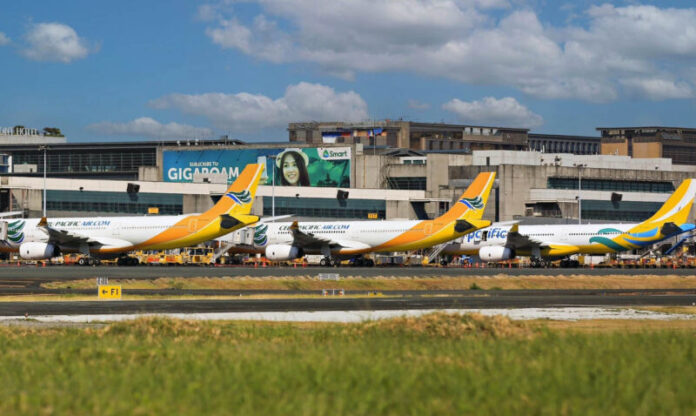-
Manila International Airport Consortium positions itself as the bidder to beat for the proposed rehabilitation of the Ninoy Aquino International Airport
-
MIAC has unveiled a US$4-billion master plan to transform NAIA into a world-class airport that will add $14.6 billion to Philippines’ coffers
-
Despite new airports to be built in areas close to Metro Manila, NAIA will remain the country’s premier gateway the consortium says
The Manila International Airport Consortium (MIAC) is unwrapping a roughly $4-billion (about P223 billion) master plan for the upgrade of Ninoy Aquino International Airport (NAIA), double the P100-billion cost it announced in April.
The mega consortium earlier submitted an unsolicited proposal to rehabilitate the country’s premier airport.
In a statement, MIAC said it is positioning itself as the right party to carry out what it describes as “a gargantuan task with a lot at stake”.
Specifically, it is proposing a multi-phased master plan to transform NAIA into a world-class hub with a capacity of 70 million passengers a year, effectively doubling its current capacity. The project will also contribute US$14.6 billion to the Philippine economy via direct investments and trade and tourism earnings.
A local newspaper said the P100-billion potential investment earlier announced was only the initial portion of MIAC’s investments. About $1 billion will be spent in the first five years while the remaining $2.8 billion will be used for the rest of the 25-year concession.
“Considering that NAIA plays a critical role in the Philippines overall transportation system, being its primary air travel gateway, it is imperative that the airport’s update should be undertaken by a party with the appropriate knowledge and experience, not to mention financial capability,” MIAC said.
The group said its members have the combined expertise in successfully delivering and operating large infrastructure projects.
The seven consortium partners include some of the country’s most established and successful conglomerates, namely, Aboitiz InfraCapital Inc., AC Infrastructure Holdings Corp., Asia’s Emerging Dragon Corp., Alliance Global – Infracorp Development Inc., Filinvest Development Corp., and JG Summit Infrastructure Holdings Corp.
These companies boast of a combined proven track record of delivering and operating some of the Philippines’ most important air travel players, including Mactan Cebu International Airport, Clark International Airport, Philippine Airlines and Cebu Pacific.
The consortium also has Global Infrastructure Partners (GIP), a leading global infrastructure investor and airport operator, as a technical partner. GIP has more than 16 years of experience in investing in and operating airports, including delivering large-scale investment programs and service level improvements.
GIP serves 100 million passengers annually through its portfolio of airports that includes some of the world’s busiest: London Gatwick Airport in England with 47 million passengers a year, Sydney Airport in Australia with 44 million passengers, and Edinburgh Airport in Scotland with 14 million passengers.
Foremost among the efficiencies which the consortium plans to introduce are those related to its cross runway. MIAC has dismissed as a myth some critics’ view of NAIA’s cross runway as a liability and the primary reason for making effective performance elusive.
The consortium cited London Gatwick Airport, the world’s busiest cross-runway airport that is operated by GIP, as being able to raise its capacity from 50 ATMs/hour (the number of take-offs or landings per hour) to 55 ATMs/hour. By comparison, NAIA, with a comparable terminal footprint and structure, can only handle 41 ATMs/hour at its peak.
MIAC said even as the government explores new air transport projects in areas surrounding Metro Manila, NAIA will still play a prominent role in the capital’s airport ecosystem since its supporting infrastructure cannot be speedily replicated for new airports.
The group said while NAIA’s rehabilitation and the establishment of new airports will create redundancies, this excess capacity is needed by Metro Manila to support the projected explosive growth of air travel in the next few years.
A NAIA with expanded capacity will provide a high level of service to passengers, particularly when it comes to convenience and comfort, the consortium said.
Current physical constraints at the terminals as well as usage of several facilities and equipment well beyond their effective lifespan have resulted in sub-par service and congestion at departure curbsides, building security screening points, check-in hall seating areas and departure, immigration and security channels, MIAC said.
To address these challenges, MIACse include flexible self check-in and bag-drop facilities, next generation security lanes, and automated boarding gates that will shorten passenger waiting and processing time. This will be coupled with improvements in air traffic control technology and new baggage handling systems that will benefit both airlines and passengers.





